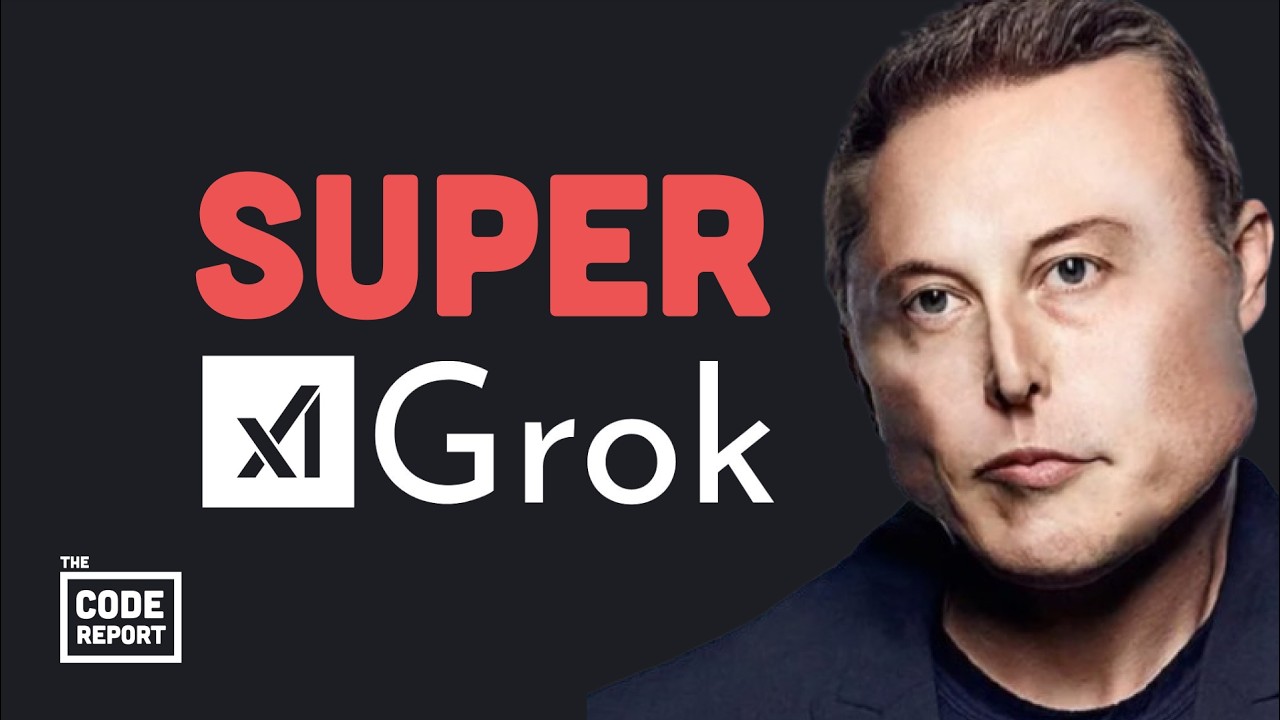The video discusses Elon Musk’s Grok 3, a new large language model that has quickly topped the LM Marina leaderboard, noted for its intelligence, minimal censorship, and upcoming paid subscription service called Super Grok. The host evaluates Grok 3’s performance against other models, highlighting its strengths in math, science, and coding, while also addressing the competitive AI landscape and Musk’s recent attempt to acquire OpenAI.
In a recent video, the host discusses the emergence of Elon Musk’s Grok 3, a new large language model (LLM) that has quickly risen to the top of the LM Marina leaderboard, surpassing existing benchmarks. Grok 3 is noted for its intelligence and minimal censorship, allowing it to generate content that may be illegal in various regions. The model features a deep thinking mode similar to DeepC and is expected to introduce a paid subscription service called Super Grok in the near future. The host expresses frustration over having to pay for Twitter Premium Plus to access Grok 3, highlighting the competitive nature of the AI landscape.
The video also touches on Elon Musk’s recent attempt to acquire OpenAI, which was rejected by the board, leaving Sam Altman to continue his profit-driven agenda. The host compares Musk’s efforts to the ongoing rivalry in the AI sector, particularly with Mark Zuckerberg, who faced backlash for allegedly using pirated books to train his Llama models. This context sets the stage for Grok 3’s unique position in the AI market, as it has direct access to Twitter’s vast data, which developers have optimized for truth-seeking, even at the cost of political correctness.
Grok 3’s performance is evaluated against other LLMs, with the model currently leading in the LM Marina blind taste test. However, the host notes that Grok’s success may be influenced by cherry-picked benchmarks, as it does not include OpenAI’s models in its comparisons. Despite this, Grok 3 reportedly excels in math, science, and coding tasks, demonstrating capabilities that are on par with other state-of-the-art models. The host emphasizes the importance of personal experience with the model, mentioning its ability to generate valid code and assist in game development.
The video provides insights into Grok’s training process, which took place at the Colossus supercomputer in Memphis, Tennessee, believed to be the largest AI supercomputer globally. This facility boasts over 200,000 Nvidia H100 GPUs, with plans to expand to 1 million GPUs. The immense power requirements have led to the use of portable diesel generators to supplement the electricity supply. The host anticipates that the upcoming Super Gro subscription will be competitively priced at $30 per month, significantly lower than ChatGPT Pro’s $200 monthly fee.
In conclusion, the host reflects on the evolving landscape of AI, where the focus has shifted from merely creating larger models to developing better prompting frameworks. The video also promotes a sponsor, Brilliant, which offers interactive lessons on deep learning and coding, encouraging viewers to enhance their understanding of the technology behind LLMs. The host wraps up the video by thanking viewers and promising more content in the future.
